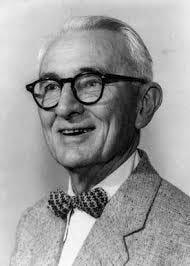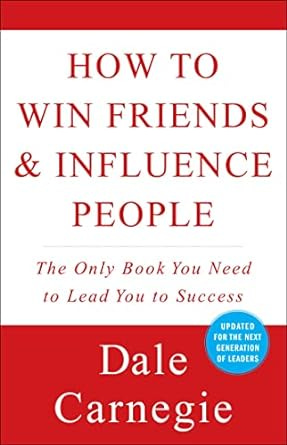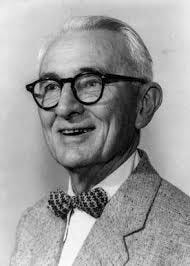What Dale Carnegie taught Warren Buffett (#83)
What Buffett learned from "How To Win Friends and Influence People"
Of all the books Warren Buffett read as a child, three books stood out as influential.
Two were what you might expect. They were about making money and investing it—not surprising for the former richest man in the world.1 2
But the third book I didn’t expect.
The third book was written in 1912 by a struggling actor-turned-lecturer, named Dale Carnegie. Based on his decades of teaching, the book proposed to teach one how to deal with people, how to lead them, and how to attract them, and has since sold over 30 million copies.
It was called How To Win Friends And Influence People.
“Warren knew he needed to win friends, and he wanted to influence people,” wrote his biographer, Alice Schroeder in The Snowball. “He opened the book. It hooked him from the first page.”
What lessons were so strong to hook Buffett so fast? There was one above all.
And it’s subject of today’s OGT.
If You Want To Gather Honey, Don’t Kick Over The Beehive
Buffett was impacted most by the first rule: “Don’t criticize, condemn, or complain.”
As his biographer explained in her book about Buffett, The Snowball:
This idea riveted Warren. Criticism was something he knew everything about.
Before the book, Buffett had been big into arguing and criticizing other people’s arguments. But he realized, after reading it, that this is not a productive way to deal with people.
As Carnegie writes in the first chapter:
Criticism is futile because it puts a person on the defensive and usually makes him strive to justify himself. Criticism is dangerous, because it wounds a person’s precious pride, hurts his sense of importance, and arouses resentment.
And later:
If you and I want to stir up a resentment tomorrow that may rankle across the decades and endure until death, just let us indulge in a little stinging criticism, no matter how certain we are that it is justified.
When dealing with people, let us remember we are not dealing with creatures of logic. We are dealing with creatures of emotion, creatures bristling with prejudices and motivated by pride and vanity.
…
Instead of condemning people, let’s try to understand them. Let’s try to figure out why they do what they do. That’s a lot more profitable and intriguing than criticism, and it breeds sympathy, tolerance and kindness.
Buffett took the book so seriously that he started A/B testing it on his friends.
He decided to do a statistical analysis of what happened if he did follow Dale Carnegie’s rules, and what happened if he didn’t…he kept track of his results. Filled with a rising joy, he saw what the numbers proved: The rules worked.
The OGT: Criticize less, work on yourself more
How To Win Friends is one of those books where the ideas seem obvious and simple, but then when you observe—either yourself or others— you see that the ideas are rarely practiced.
That was the impact it had on me in when I first read it in 2015. I reread it due to this Buffett bio reviving my interest, and I saw that I’ve still got a lot of work to do.
Two more ideas emerged from this:
First, I’m always struck by how many uber successful people credit self-help books with a disproportionate amount of their success. Just off the top of my head: Sarah Blakely (Spanx), Ray Dalio (billionaire financier), Oprah, Seth Godin, Mark Cuban, Kevin Hart. With the exception of possibly Oprah, these are not woo woo people, and Buffett certainly is not.
Second, nothing sticks—no matter how obvious and simple—unless it’s practiced, with a feedback loop, and tried again and again and again, even after you slip up. That’s what Buffett kept doing: he kept returning to the book.
Unlike most people who read Carnegie’s book and thought, gee, that makes sense, then set it aside and forgot about it, Warren worked at this project with unusual concentration; he kept coming back to these ideas and using them.
That’s all to say—time for you get back to these ideas, apply them, probably slip up, and return once again.
Not to criticize you…
He’s apparently now #6
The first, I wrote about here: One Thousand Ways to Make $1000. It’s where Buffett first saw a path to making money, and when he started to understand the concept of compounding interest. Second was The Intelligent Investor by Ben Graham— a professor at Colombia, and later, Buffett’s boss. From Graham, Buffett learned about value investing and the idea of Mr. Market.





